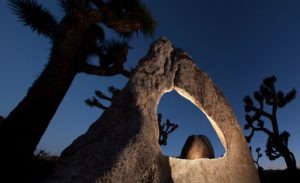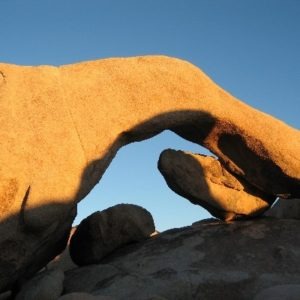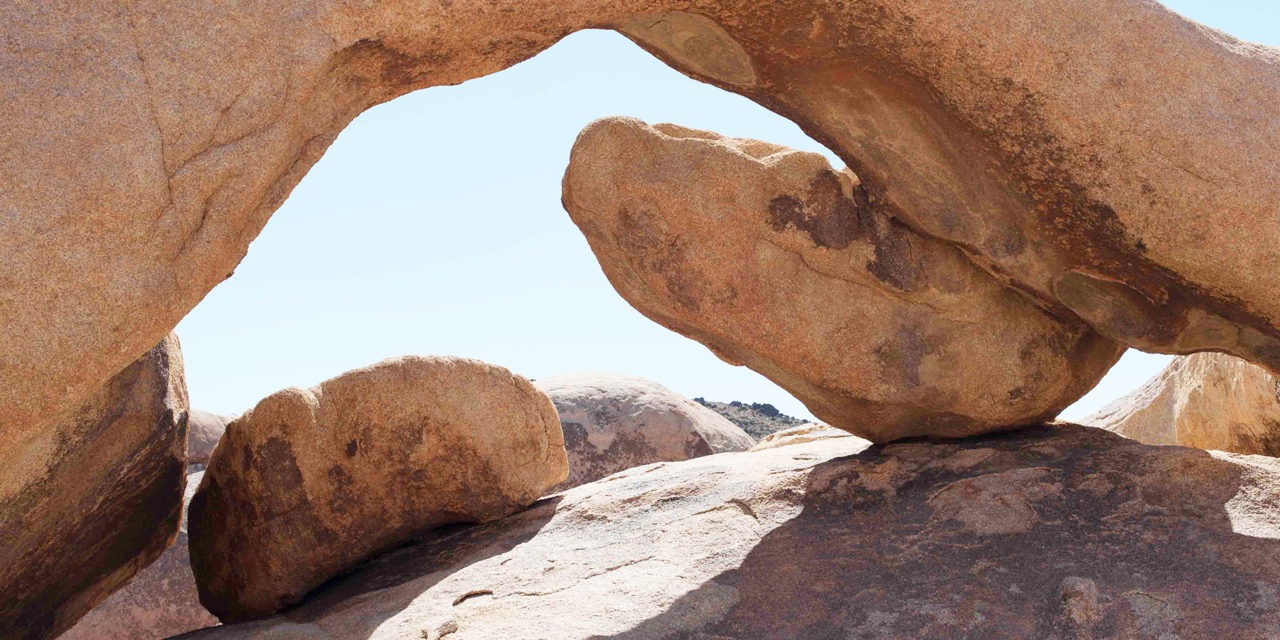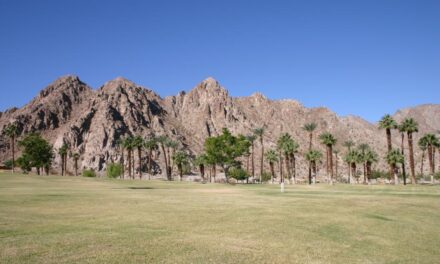Joshua Tree National Park north of the Coachella Valley has four major arches
Joshua Tree offers several arches for hiking adventures
One of the most fascinating rock formations to see in the desert West is the natural arch…and there are a few close to the Coachella Valley that you can hike.

Arches at Joshua Tree National Park are carved out of granite.
An arch forms when the elements carve out a hole – known as a “window” – into a rock formation. It usually begins when water seeps into small crevices in the stone. When trapped water freezes, it expands, widening the crevice. This allows more water to settle in these openings and for wind to assault more of the stone’s surface. Given enough time, the window can grow quite large – one at Arches National Park in Utah is almost a football field long.
Joshua Tree National Park north of the valley has four major arches.
They began forming between 135-155 million years ago when magma pushed up into the overlying rock then cooled and hardened. Since then, the overlying rock has eroded away, exposing the granite. Once above ground, rain and wind eroded a hole within the rock slab while rounding its top, resulting in an arch.
The rocks are White Tank Granite and composed of three types of minerals. The clear, glass-like rock is quartz, the milky white mineral is feldspar, and the flaky black stone is biotite.

04 Sunrise and sunset mark the best times to visit Joshua Tree’s arches as the lighting makes for magnificent coloration.
While Joshua Tree’s arches can’t match the size or number of those at Arches National Park, they are impressive, nonetheless. Just consider that Arches’ formations are carved out of soft sandstone while those at Joshua Tree were whittled out of hard granite. It’s a testament to Mother Nature’s patience…wind, rain, and the freeze-thaw cycle always win out.
Among the best arches and the trails to see them at Joshua Tree are:
Arch Rock
The 1.3-mile lollipop trail partially heads to an arch spanning 30 feet across in the granite rock formations surrounding White Tank Campground. Taking a few steps off the main trail allows you to get underneath it, and the surrounding rocks can be climbed so you can touch the arch. The trail leaves from a parking lot off of Pinto Basin Road about 3.3 miles south of Park Boulevard.
Belle’s Eye Arch
An eye-shaped hole sits in a boulder about 0.6 miles (1.2 miles round trip) north of Belle Campground along the California Riding and Hiking Trail. The Moon Mat Cave also is near the campground, off of Pinto Basin Road, in a two-for-one geology adventure.
Elephant Arch
A series of rock formations that looks like an elephant features small arches to help give the “pachyderm” its shape. It sits in the southern portion of the Wonderland of Rocks rock climbing area north of Barker Dam and can be accessed, with some scrambling over and between boulders, from that trail.
Window Rock
An arch that looks vaguely like a bird sits at the top of a rock wall along the Window Loop, a stacked loop off of the Maze Loop for a 5.3-mile hike. You’ll also pass through fantastical rock formations, slot canyons, Joshua tree forests, and desert washes. The trailhead is off of Park Boulevard.
If traveling to Joshua Tree during summer, be sure to get there at dawn or twilight when temperatures will be cooler. Those times have the added benefit of sunlight casting the arches in magnificent colors whereas the stone will be washed out in the brilliance of full daylight.
Image Sources
- Arches at Joshua Tree: Rob Bignell
- 04-sunrise-and-sunset-mark-the-best-times-to-visit-joshua-trees-arches-as-the-lighting-makes-for-magnificant-coloration.: Rob Bignell
- Arch Rock: Rob Bignell







